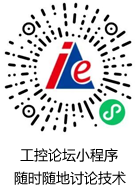P-NET系列讲座(五):多网结构 点击:1888 | 回复:3
发表于:2002-05-24 23:46:00
楼主
Multi-net Structures
--------------------------------------------------------------------------------
The previously accepted way of designing a network architecture for a factory, was to have the Fieldbus directly connected to the sensors and actuators. The Fieldbus would then be connected to a cell-controller, and a number of cell-controllers would be then connected to a cell-network, and so on, up through the hierarchy, ending with a high speed backbone network. The data rate for the network on the next level up was assumed to be a magnitude higher than on the lower networks.
This was perhaps a reasonable philosophy in the past, where all data had to eventually end up in a powerful computer at the top level. The technique for today and the future,is to distribute intelligence between the cell-controllers, interfaces and sensors. At each level, the data becomes concentrated and regulating loops are typically closed within the same bus.
The need for a fast data rate at the higher levels is now decreasing, as more intelligence is distributed. This is the reason why P-NET may be used on several levels in a complete factory automation system.




热门招聘
相关主题
- profibus 通讯协议
 [1514]
[1514] - 寻求同盟-
 [3001]
[3001] - 谈现场总线技术国家自主化的...
 [1932]
[1932] - SERCOS总线通讯原理
 [5134]
[5134] - 西门子200 SMART远程编程及程...
 [4103]
[4103] - 求助:怎样从正常通讯的RS232...
 [2378]
[2378] - 通讯测试工具之二——Modbus测...
 [29314]
[29314] - 请问工业以太网的网线(RJ45)...
 [4147]
[4147] - 综述:智能建筑中的现场总线
 [2709]
[2709] - 现场总线应用交流
 [4032]
[4032]

官方公众号

智造工程师
-

 客服
客服

-

 小程序
小程序

-

 公众号
公众号

















 工控网智造工程师好文精选
工控网智造工程师好文精选
